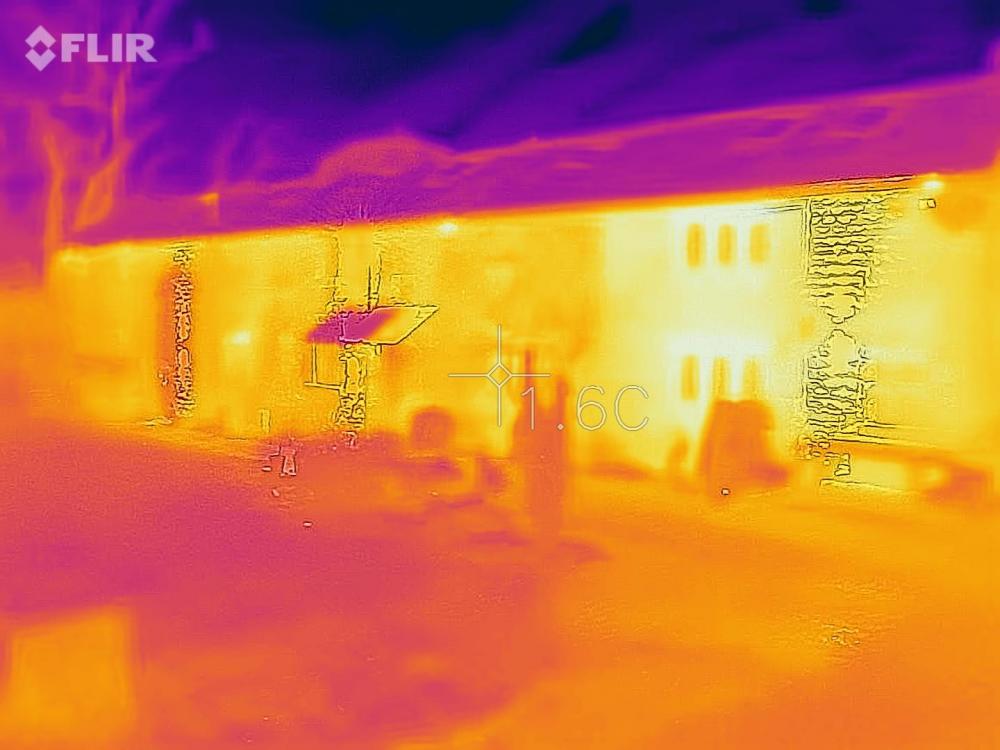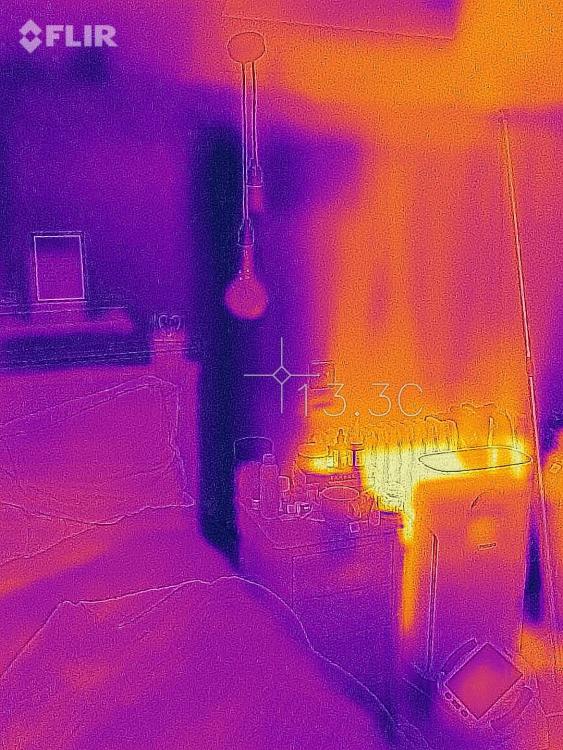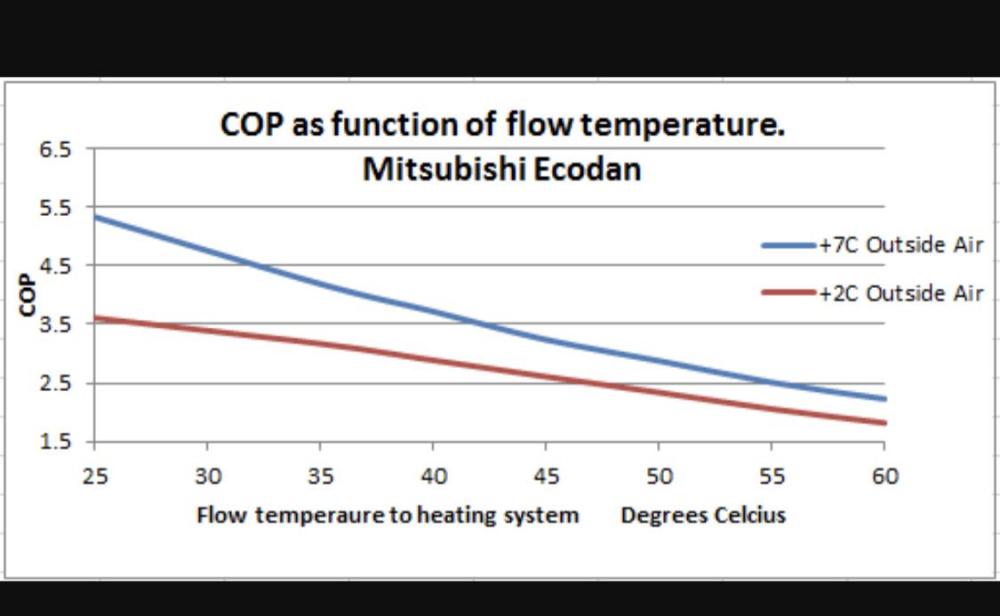-
Posts
138 -
Joined
-
Last visited
Everything posted by Benjseb
-

Your Home Base Load / Background Power Draw
Benjseb replied to MrMagic's topic in Photovoltaics (PV)
Haha. I’ll keep you posted. -

Your Home Base Load / Background Power Draw
Benjseb replied to MrMagic's topic in Photovoltaics (PV)
One of our issues is the holiday let/AirBnB attached to the house. Im thinking of adding some “Think of the planet, please use appliances when sunny” signs but they will probably be ignored. Or people will see straight through them and realise im just trying to save money 😂 We can’t currently get a smart off peak tariff as our smart meter installer was scared away by a loose screw on the fuse cover. DNO confirmed no risk at all. So another appointment booked for a less fussy installer. Let’s hope! -

Your Home Base Load / Background Power Draw
Benjseb replied to MrMagic's topic in Photovoltaics (PV)
We’ve just turned our heating off (ASHP) which was masking a fairly high base load… 900W!! We do have a holiday let too which is all electric attached to same supply but the total never goes below 900W. Will be using a plug in meter over the next few weeks to see what’s using it. 900W x 24 x 30 = 649kWh At 29p/kWh that’s £188 per month just for base load. -
In our barn conversion we have 8 external doors downstairs, of which 6 are north facing. These are single doors but very large glazed areas. They make a big difference to the amount of light we get inside. We’re going to replace them as the 2g glazing is very low profile and they have single thickness timber cladding at the bottom. So we’ll be going 3g and probably converting some doors to non-opening fully glazed windows so we get the light without the reduction in U value than openings bring.
-
A few things to consider if the heat loss calculation is incorrect, the heat pump provided would most likely be too small to cope with the actual heat loss that’s occurring. In that case then yes the heat loss is incorrect, but also, yes the Heatpump is struggling because of this. Also some heat pumps only output their stated kW down to certain external temps. If the installer isn’t aware he might not have accounted for this. Whether it’s the heat loss that’s incorrect or the heat loss is correct and the pump can’t handle it, the installer needs to come back and sort it.
-
Thanks all this has been very useful. We’ve got a few rooms to do so have picked up some recommendations for some low-energy retrofit architects who specialise in old houses to get in touch with for a while-house plan. Carbon.coop is up our way too so will be getting in touch with them. The plan is to get a full house plan so everything is considered then we can tackle each room with this plan in mind.
-

Broken Fan on ASHP - Dimplex A16M 16kW
Benjseb replied to Siggles's topic in Air Source Heat Pumps (ASHP)
If the ASHP is really only 4 years and essentially irreparable I would be taking Dimplex to small claims court under the consumer regs as a heat pump should last 15 years plus so it’s unsuitable for use. -

Husky air source heat pump, anyone still got one?
Benjseb replied to Simtronic's topic in Air Source Heat Pumps (ASHP)
We switched to a Mitsubishi Ecodan and Panasonic Aqueria. Both are miles better. -

Husky air source heat pump, anyone still got one?
Benjseb replied to Simtronic's topic in Air Source Heat Pumps (ASHP)
Just as a tip with Husky. We had three of their units at work. Found they worked 90% of the time then some random software bug would force them to stop and we’d get a very cold office. My advice would be to keep it as simple as possible to avoid these bugs. Pop your water onto a fixed flow temp rather than rely upon weather compensation etc. Don’t use timers. We got an F gas engineer to check ours. It had twice as much gas in as was needed! -
Thanks, very wise words! I’m sure all our gutters and drains are OK as we had them all fixed. Funny story... we found them all draining into an old water pit under the house. Which was obviously now leaking so all the rainwater was just soaking the ground. So had it have it all dug out and drained properly. Anyway, that’s the other end of the house so doesn’t affect this room anyway but strange what you find! We do have some flower beds against the walls so I’ve started digging a french drain between the house the soil to lower the levels. On one side we have a cobbled courtyard which is about 6” to high so will do the same there too but that requires a bit more than a spade so will have to wait until summer. I think in general our water table is quite high as we live on the bottom of a hill. Thanks fully very good working field drains which all head off away from us but any opportunity I get I add more acodrains to ensure any surface water is intercepted. The reason for looking at insulation is I did a thermal camera survey and from outside you see this section of the house is noticeably warmer externally (right 1/3 of pic attached). There’s also sections internally where you can see insulation is missing (see other pic, beside the bed)
-
Thanks @Iceverge. Will check those links out. Currently, from what we can tell it’s stone exterior with a cavity and brick interior. Then there’s 50mm of kingspan between studs and drywall over that. The issue is the kingspan has been added badly with no foam to seal it so there’s big chunks you can move about, so very poor fitting. It’s a pitched ceiling with, again, 50mm of badly fitted kingspan. Elsewhere in the house it’s the same structure but instead of the kingspan there’s 50mm of XPS backed plasterboard and it’s soo much better. The ceiling has had another 50mm of well fitted kingspan and that seems to be working nicely So I’m think long something like: Remove kingspan, replace with 75mm and foam in place. Add 25mm insulation backed plasterboard on top of stud frame. or Remove kingspan and use sheepswool, then 25mm insulated plasterboard on top. But what I’m not sure of is what depth I can go to without causing issues with interstitial condensation etc. I’ve had issues with mould in previous houses and really don’t want to go there again our internal humidity can get to 70% in the summer so I was thinking using sheepswool might be better to allow it to breathe more, but again no idea how that works with the moisture risk etc.
-
Hi all We have an old period house c1750s. It’s been Renovated approx 15 years ago and it generally v good condition. Approx 250sqm and long and thin so most rooms have 2-3 external walls. We have realised that 1/3 of the house, which is our lounge and master bedroom has been insulated differently (kingspan behind dry lining rather than XPS backed plasterboard elsewhere). I think due to how that’s been done (it with big gaps!) these two rooms tend to take much longer to heat up and therefore cost more to keep cosy. I’ve done some work with a thermal camera which verifies our thoughts. We’d like a plan for improving the improving the wall and ceiling (master bed is in the eaves) insulation but I’m very aware that just whacking a load of kingspan in could lead to humidity issues in the house or interstitial consensation etc. Having a healthy interior is very important to us. I don’t trust getting this advice from a builder so would like the opinion of someone independent who can do the calculations etc then we can specify this to a builder. Who are we best to approach for this advice? Thanks
-

Husky air source heat pump, anyone still got one?
Benjseb replied to Simtronic's topic in Air Source Heat Pumps (ASHP)
We had 3 at work. Each one developed a software fault. I think it’s just shoddy software, it would randomly switch to DHW mode even though we don’t have a tank and then error out. The amount of times we’d come into work on a Monday to an office at 16c we decided to rip them out and pop Panasonic’s in. No issues since. -
When I got all my quotes I was told Panasonic were equal to Mitsubishi but to avoid others as they weren’t as reliable?
-
you’re probably better finding a thermostat you can “reverse” so it calls for heat when the room temp is OVER the set point. Then each spring switch it over.
-
You need your heat calcs that have been performed really to know what your house energy demand is. that will illustrate if you need 11vs16kW Some installers will guess abs bump you up to the next biggest model to be sure you’ve got enough output but best to find out a decent “guesstimate” from doing a heat calc. Another thing to check is what the output is when it’s very cold. Some manufacturers will only output the stated kW at a certain stated temp (eg 7c outdoors). As such if it gets to -2c you may find your. 12kW Heatpump is now only a 9kW. That might be why the LG seems over specced we have an Ecodan. It’s a bigger 14kW Zubadan which means it maintains 14kW down to something like -20c so there’s no need to over spec. As a vote of confidence our Ecodan has been excellent.
-
-
from my understanding the COP goes down with water temp. I’ve always been told/read that 35c would be much better over 45c for example. So therefore having the ASHP flow hotter than the final flow temp of the UFH means you’re running at a COP lower than needed where have you seen 48c is a sweet spot? That seems high to me.
-
You can also do the UFH buffer without a coil. It’s not really a buffer if it has a coil it’s more like a heat exchanger. if you keep the coil it means you only need glycol in the circuit from ASHP to buffer. Without you need glycol in the UFH too (I believe this is the usual setup) The issue with the coil is you need that circuit slightly hotter to transfer the heat the UFH circuit. Maybe 5c-10c hotter. Which introduces an inefficiency. Personally I’d just remove the coil and run it at a lower temp.
-

What's the issue? Help Please ?
Benjseb replied to canalsiderenovation's topic in Air Source Heat Pumps (ASHP)
If you have solar and a diverter (we have an Eddi), then link the ASHP immersion connection to the boost input on the diverter Something to consider, none of these systems are intelligent enough to work out that during the week the cylinder temp has been sat at 60c+ due to lots of sunshine. It’s just a basic timer So then in a dull day it runs legionnaires cycle when it’s not needed, just because it’s been 7 days. there really should be some logic to say only run if the tank hasn’t hit 60c for an hour recently We’ve just turned the legionnaires off ? -

Ventilation plan for period house
Benjseb replied to Benjseb's topic in Mechanical Ventilation with Heat Recovery (MVHR)
Well yes that colder air needs warming. But if the humidity in the house is 10-15% lower there’s a lot of energy that won’t be wasted as latent energy heating up water vapour. Also, any house needs ventilation. Whether that comes in through cracks, uncontrollably, or whether it’s blown in via PIV, controllably, there has to be air movement. Id personally prefer to draughtproof the house as much as possible and then have PIV+dMEV which I can turn up /down as I please. Anyone done the sums to compare? -

Ventilation plan for period house
Benjseb replied to Benjseb's topic in Mechanical Ventilation with Heat Recovery (MVHR)
PIV is in and running. Noticed quite a change already. The downstairs is probably 10-15% lower RH than it was before, depending upon the weather we’re sweating between 50% and 60% consistently now, rather than 60-75% A success I’d say. It’s underpowered for the size of house (250m2) but I’m using it more as a way of inputting fresh dry air in a controlled manner, rather than worrying too much about there being a specific positive pressure. Does the trick! -

Ventilation plan for period house
Benjseb replied to Benjseb's topic in Mechanical Ventilation with Heat Recovery (MVHR)
I was told the flat units need to be installed one upstairs and one downstairs so starting downstairs. I don’t think it makes much difference, if it’s mainly working by pressurisation. In my head, if humid air rises as it’s less dense then putting a PIV on the top floor ceiling would potentially push that humid air down? But probably overthinking. I reckon they just put them there due to the convenience of the loft space.






